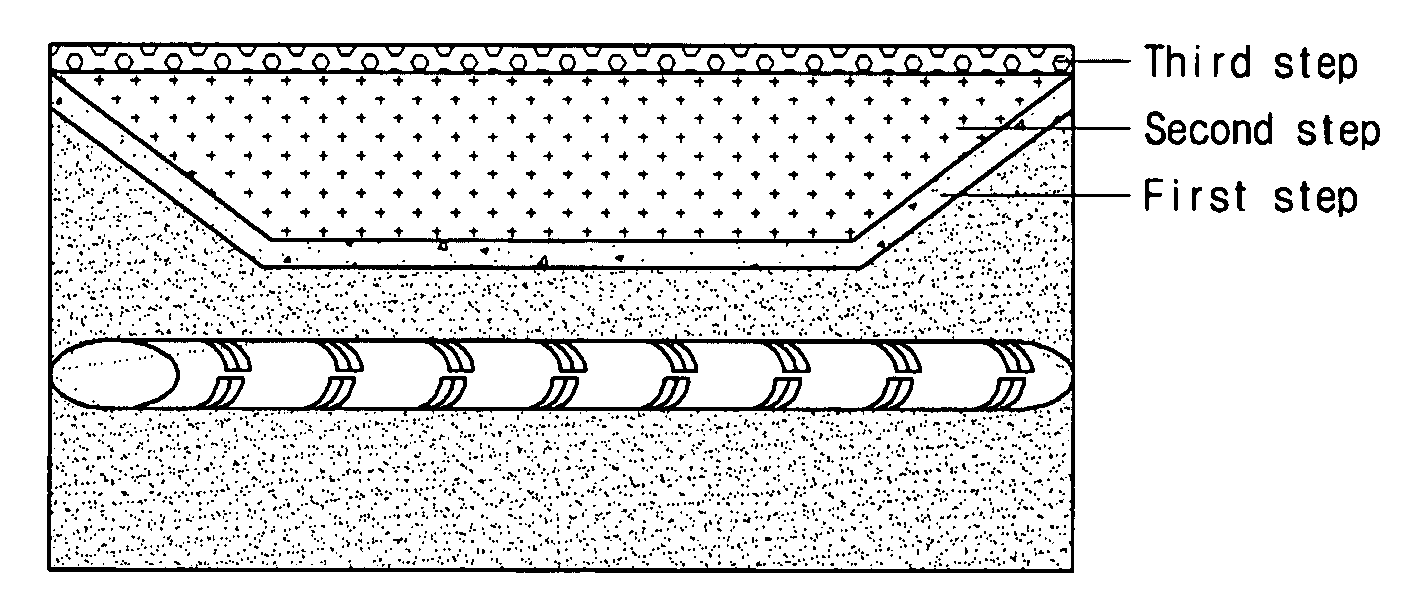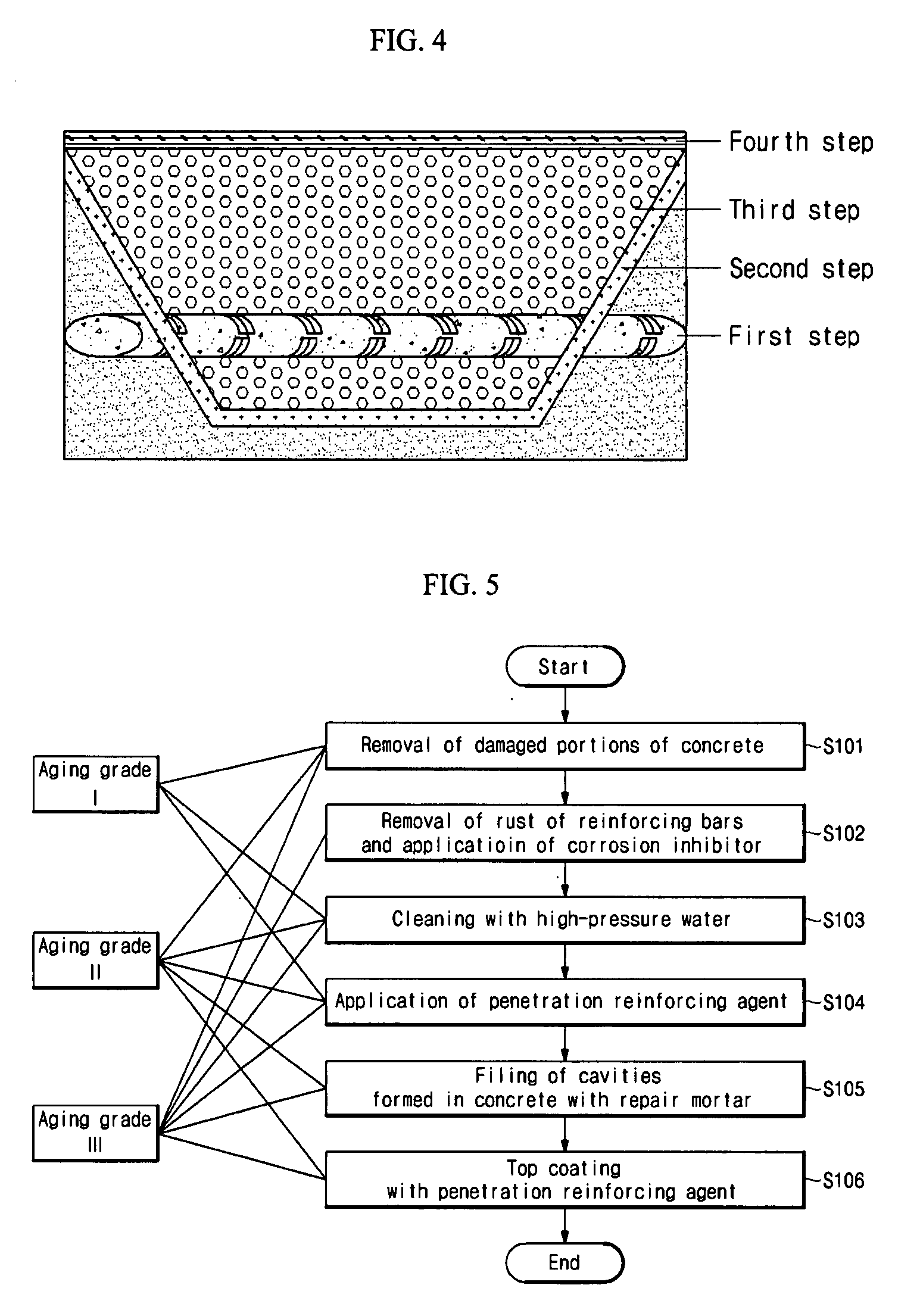Method for repairing aged reinforced concrete structure using surface-penetration reinforcing agent
- Summary
- Abstract
- Description
- Claims
- Application Information
AI Technical Summary
Benefits of technology
Problems solved by technology
Method used
Image
Examples
example 1
Preparation of Surface-Penetration Reinforcing Agent
[0083]1) Preparation of Silicate Polymer of Formula 1
[0084]60% by weight of tetraethylorthosilicate, 28.3% by weight of butyl acrylate, 9.7% by weight of methyl methacrylate and 2% by weight of hydroxyethyl acrylate were added to a polymerization reactor, and α,α′-azobisisobutyronitrile (AIBN) as an initiator was added thereto. The mixture was allowed to react with stirring at 60 rpm for 8 hours while maintaining the temperature of the reactor at 80° C. The reaction mixture was cooled to room temperature to give the silicate polymer of Formula 1.
[0085]2) Preparation of Silicate Polymer of Formula 2
[0086]85% by weight of tetraethylorthosilicate, 14.17% by weight of diethanolamine and 0.83% by weight of p-toluenesulfonic acid were added to a reactor. The mixture was allowed to react with stirring at 60 rpm for 8 hours while maintaining the temperature of the reactor at 85° C. The reaction mixture was cooled to room temperature to giv...
experimental example 1
Measurement of Physical Properties of the Surface-Penetration Reinforcing Agent
[0091]The viscosity of the surface-penetration reinforcing agent was measured using a single-cylinder rotational viscometer (Brookfield viscometer (DV-II+)) in accordance with KS F 3705. The viscosity measurement was done by measuring a torque necessary to constantly rotate a spindle immersed up to a marked line in the surface-penetration reinforcing agent. As a result, the surface-penetration reinforcing agent was measured to have a viscosity of 550 cps. The surface tension of the surface-penetration reinforcing agent was measured using a Du Nouy tensiometer, which is a general engineering tester. As a result, it was found that the surface-penetration reinforcing agent had a surface tension of 104 dyne / cm.
example 2
[0092]The surface-penetration reinforcing agent prepared in Example 1 was stored and stabilized indoors at 23° C. for 24 hours. Separately, 1.1% by weight of phenolphthalein was slowly added dropwise to 98.9% by weight of ethanol (purity≧95%) with stirring.
[0093]Slow stirring was continued until the phenolphthalein was completely dissolved to obtain a colorless transparent composition. 50%, 30%, 20%, 10% and 5% by weight of the phenolphthalein-containing ethanolic solution were mixed with 50%, 70%, 80%, 90% and 95% by weight of the surface-penetration reinforcing agent prepared in Example 1, respectively. The resulting mixtures were slowly stirred for 10 minutes to prepare surface-penetration reinforcing agents.
PUM
| Property | Measurement | Unit |
|---|---|---|
| Fraction | aaaaa | aaaaa |
| Percent by mass | aaaaa | aaaaa |
| Percent by mass | aaaaa | aaaaa |
Abstract
Description
Claims
Application Information
 Login to View More
Login to View More - R&D
- Intellectual Property
- Life Sciences
- Materials
- Tech Scout
- Unparalleled Data Quality
- Higher Quality Content
- 60% Fewer Hallucinations
Browse by: Latest US Patents, China's latest patents, Technical Efficacy Thesaurus, Application Domain, Technology Topic, Popular Technical Reports.
© 2025 PatSnap. All rights reserved.Legal|Privacy policy|Modern Slavery Act Transparency Statement|Sitemap|About US| Contact US: help@patsnap.com



